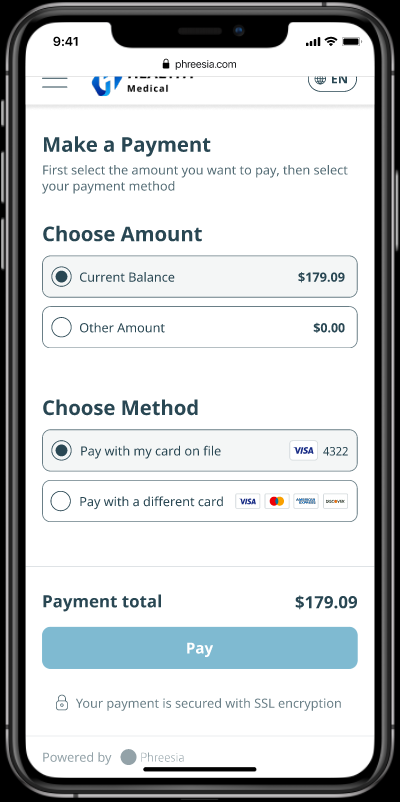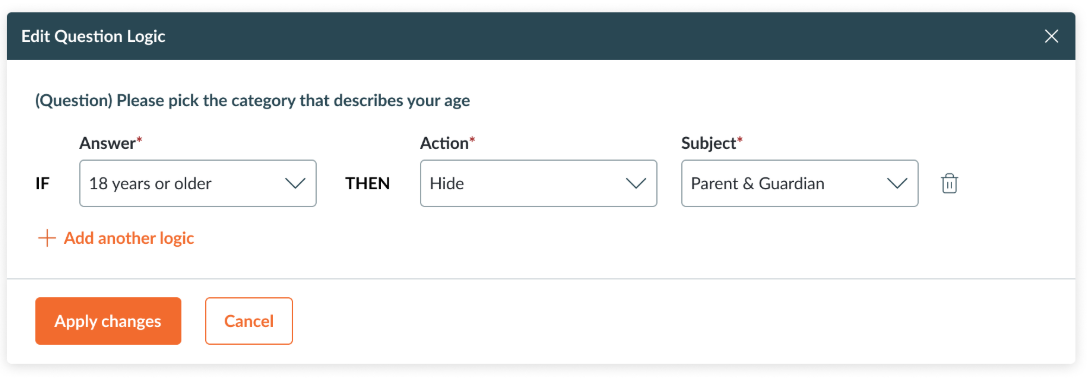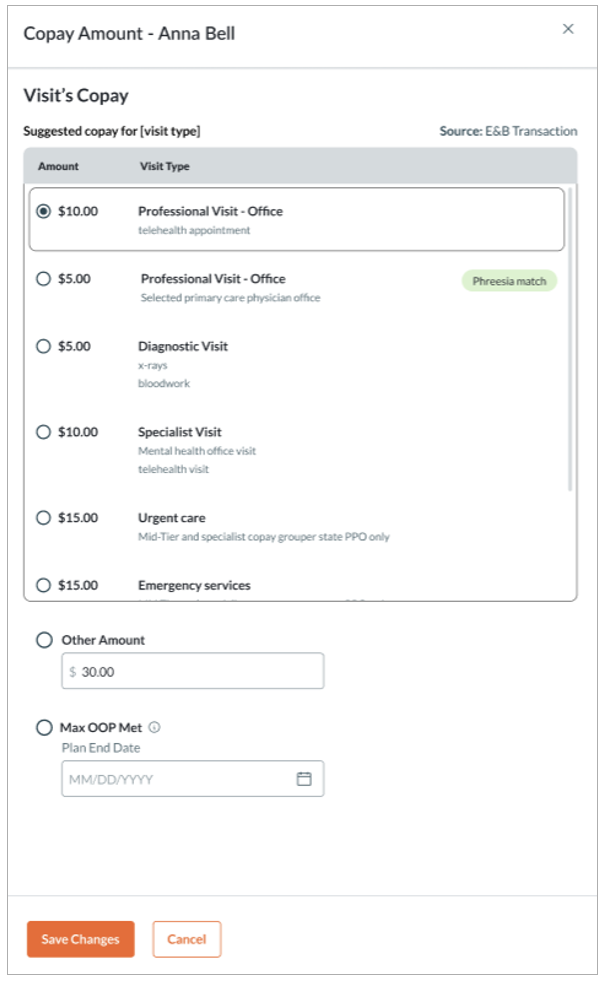🚀Featured
Collect payments faster with card on file for Patient Bill Pay
What’s new: Patients can now make payments via Patient Bill Pay using their card on file. Patients can add cards during intake, or a staff member can add them on the Dashboard.

How this helps you: Using a card on file means patients can make payments without having to re-enter card details, so paying on time is faster and easier than ever.
We previously supported card on file payments for intake, Payment Assurance and payment plans—now, this functionality is available for Patient Bill Pay, too.
Send appointment details and calendar invitations to patients when they book
What’s new: With Appointment Acknowledgements, you can automatically send patients their appointment details via email or text message when they book a new visit. Emails can include an “Add to Calendar” link, so patients can quickly add it to their digital calendar.
How this helps you: Sending notifications and calendar invites when a patient books their visit helps reduce no-shows, especially for visits scheduled weeks or months in advance.
Plus, by helping patients get used to receiving messages from Phreesia, you’ll increase their engagement with future messages we send on your behalf.
Next step: This offering is available to certain markets—reach out to learn more!
Make self-scheduling faster and more intuitive with custom logic
What’s new: Guide patients to the right appointment slot when they complete self-scheduling or appointment request forms online. Based on patients’ responses to customized questions, automatically filter the appointment types they’ll see.
For example, if a patient chooses a certain response to a question, you can present a unique follow-up question or hide a later question that’s not relevant to them.

How this helps you: Streamlining the self-scheduling flow makes the process quicker for patients and ensures they book the right appointment—so your staff never need to call and reschedule with the correct provider or location.
Next step: This feature will be automatically available upon release. Reach out to your Phreesia representative to set up your custom logic or learn more here.
Dashboard
Launch Phreesia directly from athenaOne
What’s new: We’re working with athenahealth to roll out single sign-on (SSO) for Phreesia clients that use their system. As part of that, athenaOne users will now be able to access Phreesia launch points from within your athenaOne environment. Those launch points include the classic Dashboard and mobile Dashboard.
How this helps you: Using SSO means you no longer need to manage multiple sets of login credentials for different launch points. It also increases the security of your account.
Next steps: We’re launching this offering over the next few months. To access the launch points from athenaOne, you’ll first need to configure SSO. Reach out to your Phreesia representative to learn more.
Eligibility & Benefits
Select copays quickly and easily with new sorting options
What’s new: We’ve updated the Copay Selection Panel to include a new “Sort” option for the Amount and Copay Description columns. We also added a “Phreesia Match” indicator to show which copay was originally selected and have clearly defined “No Copay” as $0.

How this helps you: Copay selection will be better organized and more transparent, reducing confusion and errors.
Next steps: This update will be automatically available upon release.
Privacy & Security
Update password policies to keep your organization’s data secure
What’s new: You’ll need to update your organization’s Phreesia password settings to require all of your users to change their passwords to meet our new default standards. These guidelines reflect industry standards and enhance security.
How this helps you: Our new password standards require a minimum password length of 12 characters. Adhering to that minimizes the risk of compromised accounts due to weak or easily guessable passwords.
Next step: You’re in control: Your organization can update its password settings to match our new default policy any time after December 16. Please note that by March 2025, any organizations that haven’t updated these settings yet will need to reset all users’ passwords to meet the new guidance.
Registration
Seamlessly provide personalized patient education within Patient Surveys
What’s new: Educate patients about their health conditions, care options, financial support programs, public health and more with Digital Patient Engagement (DPE). Patients will be able to view this personalized content after completing satisfaction surveys if they have accepted a Phreesia HIPAA Authorization to opt in to additional content.
How this helps you: Sharing content helps patients understand and explore their healthcare options further. Across all patients we surveyed in 2024, 47% shared that the information they viewed in DPE content was new to them.
Next step: Starting in January 2025, patients will be able to see this content after completing a survey. Note that DPE content will only be displayed after surveys that do not contain links to external review sites.
Hide providers’ names from pre-visit communications
What’s new: You can now choose to selectively hide providers’ names from your pre-visit communications.
How this helps you: If you sometimes assign patients to a placeholder “provider” name that won’t match who your patient will see, you can hide that placeholder name in pre-visit communications to avoid confusion.
Next steps: To hide a provider’s name on the welcome screen, navigate to Intake Configuration > Configuration > Workflow Management underneath the current setting “Hide Appointment Date on Welcome Screen.”
Phreesia Library
Phreesia offers a library of standardized tools and best-practice content designed to align with industry recommendations and increase completion rates. These pre-built modules can be seamlessly added to your existing intake workflows. Organizations that use these modules see a 9.5% lower drop rate, and patients complete interviews 48.8% faster compared to custom content.
We deploy new and updated content every release. Contact your Phreesia representative to get started!
Standardized tools
We now offer the following clinically validated patient-reported outcomes (PROs).
New York State version of the Accountable Health Communities Health-Related Social Needs (AHC HRSN) SDOH screening tool
This 12-item, New York-specific questionnaire assesses many social drivers of health, such as a patient’s living situation, food (in)security, transportation and safety.
Updated version of the COVID-19 Vaccine information Sheet
Vaccine information sheets help patients understand the risks and benefits of the COVID-19 vaccine (2024-2025 Formula) and contains age of administration recommendations.
Updated pronouns in the Short Mood and Feelings Questionnaire (SMFQ)
All instances of gendered pronouns (he/him/his and she/her/hers) have been changed to the gender-neutral they/them/theirs in the SMFQ, as approved by Duke University. Ensuring consistent language across all tools ensures a more cohesive and inclusive patient experience.
